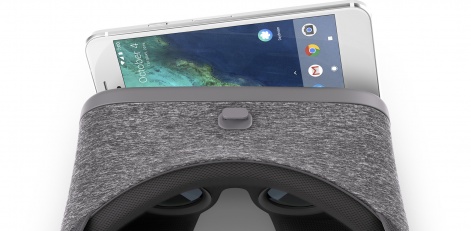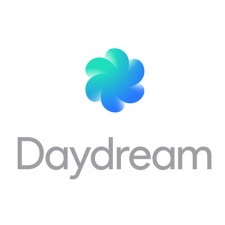The most recent Compatibility Definition Document for Android specifies the hardware requirements for Daydream VR. This includes display, processing, and video decoding specifications that must be met to ensure Daydream-ready status.
To outline some key display specs found in the Document, it is ‘strongly recommended’ to be 1440p resolution or higher, with a minimum requirement of 1080p, and must measure between 4.7” and 6” diagonal. A 60Hz refresh rate is required while in VR mode; and Grey-to-Grey, White-to-Black, and Black-to-White pixel switching must remain under 3ms, as well as support for a low-persistence mode - which reduces image blur - with up to 5ms switching.

For processing, device implementations must have at least 2 physical cores, one of which will be exclusive to the VR application in use, not allowing any other processes to run on it. Devices must also support OpenGL ES 3.2 and Vulkan Hardware Level 0, as well as sustained performance mode.
Video decoding requirements were specified in the document as well, where Daydream-ready phones must - at a minimum - support H.264 decoding 3840x2160@30fps-40Mbps. On top of that, HEVC and VP9 must be supported, decoding at least 1920x1080@30fps-10bmps.
Are you still with us? That’s a lot of specs! Whether phone makers will prioritise making their products Daydream-ready is yet to be seen during these early days, but we can expect Android phones to meet these requirements by default in the long term. Check out the full list of specs below.
Full VR Specs
• Device implementations MUST have at least 2 physical cores.
• Device implementations MUST declare android.software.vr.mode feature.
• Device implementations MUST provide an exclusive core to the foreground application and MUST support the Process.getExclusiveCores API to return the numbers of the cpu cores that are exclusive to the top foreground application. This core MUST not allow any other userspace processes to run on it (except device drivers used by the application, but MAY allow some kernel processes to run as necessary.
• Device implementations MUST support sustained performance mode.
• Device implementations MUST support OpenGL ES 3.2.
• Device implementations MUST support Vulkan Hardware Level 0 and SHOULD supportVulkan Hardware Level 1.
• Device implementations MUST implement EGL_KHR_mutable_render_buffer and EGL_ANDROID_front_buffer_auto_refresh, EGL_ANDROID_create_native_client_buffer, EGL_KHR_fence_sync and EGL_KHR_wait_sync so that they may be used for SharedBuffer Mode, and expose the extensions in the list of available EGL extensions.
• Device implementations MUST implement EGL_IMG_context_priority, and expose the extension in the list of available EGL extensions.
• Device implementations MUST implement GL_EXT_multisampled_render_to_texture, GL_OVR_multiview, GL_OVR_multiview2 and GL_OVR_multiview_multisampled_render_to_texture, and expose the extensions in the list of available GL extensions.
• Device implementations MUST implement EGL_EXT_protected_content and GL_EXT_protected_textures so that it may be used for Secure Texture Video Playback, and expose the extensions in the list of available EGL and GL extensions.
• Device implementations MUST support H.264 decoding at least 3840x2160@30fps-40Mbps (equivalent to 4 instances of 1920x1080@30fps-10Mbps or 2 instances of1920x1080@60fps-20Mbps).
• Device implementations MUST support HEVC and VP9, MUST be capable to decode at least 1920x1080@30fps-10Mbps and SHOULD be capable to decode 3840x2160@30fps-20Mbps (equivalent to 4 instances of 1920x1080@30fps-5Mbps).
• The device implementations are STRONGLY RECOMMENDED to support android.hardware.sensor.hifi_sensors feature and MUST meet the gyroscope, accelerometer, and magnetometer related requirements for android.hardware.hifi_sensors
• Device implementations MUST support HardwarePropertiesManager.getDeviceTemperatures API and return accurate values for skin temperature.
• The device implementation MUST have an embedded screen, and its resolution MUST at least be FullHD (1080p) and STRONGLY RECOMMENDED TO BE be QuadHD (1440p) or higher.
• The display MUST measure between 4.7” and 6” diagonal.
• The display MUST update at least 60Hz while in VR Mode.
• The display latency on Gray-to-Gray, White-to-Black, and Black-to-White switching time must be • The display MUST support a low-persistence mode with • Device implementations MUST support Bluetooth 4.2 and Bluetooth LE Data Length Extension.
You can read Google's full compatibility definition here.













